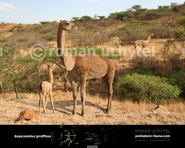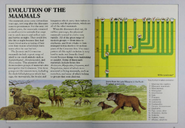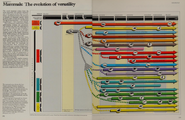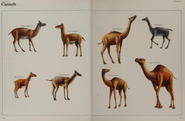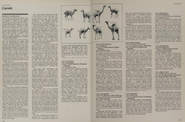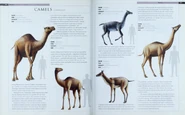| Aepycamelus | |
|---|---|

| |
| Scientific classification |
Aepycamelus is a Tylopod from Miocene North America. It was a member of the camel family.
Description[]
The camelid that lived during the Miocene 20.6–4.9 million years ago, existing for about 15.7 million years. Its name is derived from the Greek word αἰπύc: for "high and steep" and κάμηλος: simply means; "camel"; thus the combination: "high camel". [1]
Unlike earlier species of camelids, they possessed cushioned pads like those of modern camels. [2]
Biology[]
Aepycamelus giraffinus was a prairie dweller of North America; Colorado and other midwestern states. Its head was relatively small compared with the rest of its body, its neck was long, as a result of giraffe-like lengthening of the cervical vertebrae, and its legs were long and stilt-like, with the elbow and knee joints on the same level. The top of its head was about 3 m (9.8 ft) above the ground. [3]
Its unique body structure gives information on its life and dietary habits. Aepycamelus inhabited dry grasslands with groups of trees. The animal presumed to have moved about solitarily or in very small groups, like today's giraffes, browsed high up in the trees.
In this ecological role, it had no known competitors. It survived a relatively long time, through most of the Miocene epoch, and died out prior to the start of the Pliocene, possibly due to climatic changes. [4]
In popular culture[]
- Aepycamelus appeared in the video game Jurassic Park Builder.
Gallery[]
References[]
- ↑ http://www.perseus.tufts.edu/hopper/text?doc=Perseus:text:1999.04.0057:entry=ai)pu/s
- ↑ The Marshall Illustrated Encyclopedia of Dinosaurs and Prehistoric Animals
- ↑ The Marshall Illustrated Encyclopedia of Dinosaurs and Prehistoric Animals. p: 277
- ↑ https://www.goodreads.com/book/show/17971.The_Eternal_Frontier

